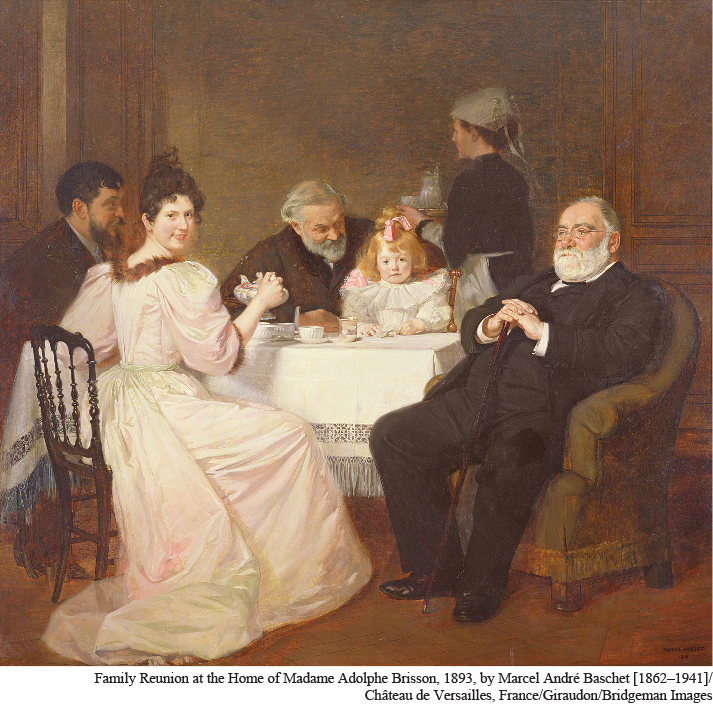The Middle Classes
Those who benefited most conspicuously from industrialization were members of that amorphous group known as the middle class. At its upper levels, this middle class contained extremely wealthy factory and mine owners, bankers, and merchants. Such rising businessmen readily assimilated into aristocratic life, buying country houses, obtaining seats in Parliament, sending their sons to Oxford or Cambridge University, and gratefully accepting titles of nobility from Queen Victoria.
Guided Reading Question
▪CHANGE
How did Britain’s middle classes change during the nineteenth century?
Far more numerous were the smaller businessmen, doctors, lawyers, engineers, teachers, journalists, scientists, and other professionals required in any industrial society. Such people set the tone for a distinctly middle-

AP® EXAM TIP
You must know how the Industrial Revolution changed gender roles beginning in the early nineteenth century.
Male elites in many civilizations had long established their status by detaching women from productive labor. The new wealth of the Industrial Revolution now allowed larger numbers of families to aspire to that kind of status. With her husband as “provider,” such a woman was now a “lady.” “She must not work for profit,” wrote the Englishwoman Margaretta Greg in 1853, “or engage in any occupation that money can command.”20 Employing even one servant became a proud marker of such middle-class status. But the withdrawal of middle-class women from the labor force turned out to be only a temporary phenomenon. By the late nineteenth century, some middle-class women began to enter the teaching, clerical, and nursing professions, and in the second half of the twentieth century, educated middle-class women flooded into the labor force. By contrast, the withdrawal of children from productive labor into schools has proved a more enduring phenomenon as industrial economies increasingly required a more educated workforce.
As Britain’s industrial economy matured, it also gave rise to a sizable lower middle class, which included people employed in the growing service sector as clerks, salespeople, bank tellers, hotel staff, secretaries, telephone operators, police officers, and the like. By the end of the nineteenth century, this growing segment of the middle class represented about 20 percent of Britain’s population and provided new employment opportunities for women as well as men. In just twenty years (1881–1901), the number of female secretaries in Britain rose from 7,000 to 90,000. Almost all were single and expected to return to the home after marriage. Telephone operators had initially been boys or men, but by the end of the nineteenth century in both Britain and the United States that work had become a wholly female occupation. For both men and women, such employment represented a claim on membership in the larger middle class and a means of distinguishing themselves clearly from a working class tainted by manual labor. The mounting ability of these middle classes to consume all manner of material goods — and their appetite for doing so — was among the factors that sustained the continuing growth of the industrializing process.